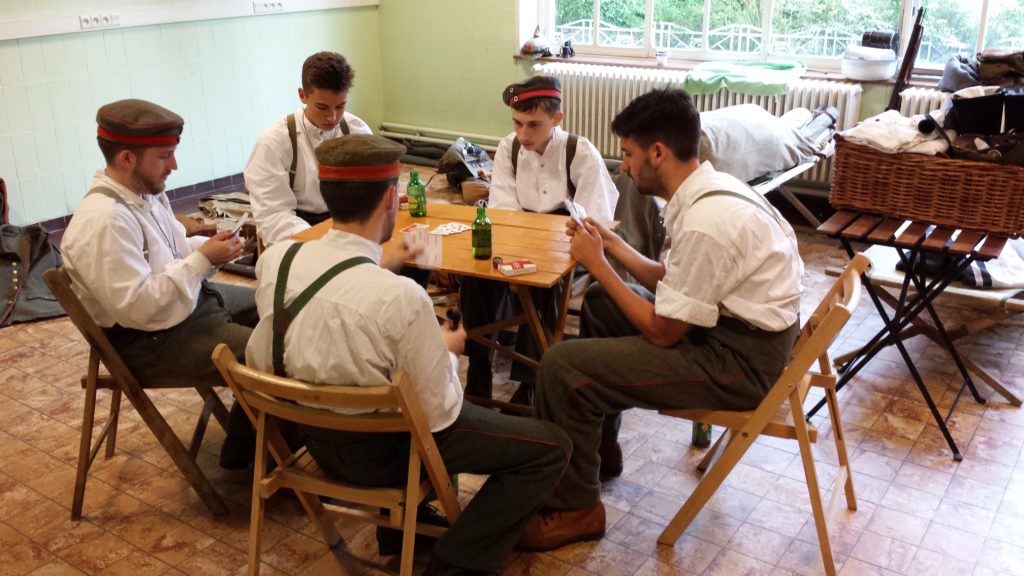Decades of playing war games and reenacting have helped my study of military history tremendously. Six years ago today my son and I were infantrymen in Infanterie-Regiment Nr. 28 “von Goeben” of the Imperial German Army, advancing on Mons Belgium in a recreation of the opening moves of WW1. This was my favorite event of all time. Why? The timing and location, the attention to detail, and the opportunity for first-person living history.
It was just outside Mons that the BEF and the Imperial German Army first clashed in mid-August 1914. In the reenactment, the unit spent three days training and marching, followed on the fourth day by a 9-kilometer (5.5 mile) march into Mons. The march included a symbolic volley of shots over the canal where the first engagement occurred. When it ended, the unit participated in a living history display in Mons.

Our packs were a little lighter than what the 1914 German soldier would have had: We were not carrying 200 rounds of ammunition, our packs were not stuffed with early-war extras that were likely discarded after a few days march, and cool weather helped. Nevertheless, I’m guessing a significant number of today’s reenactors could not march five miles in kit.
In addition to training and marching, the event included meals from an original field kitchen, mail call, and plenty of time for period entertainment. JR28 consisted of a mix of British and German reenactors, with two token Americans. Having German reenactors in the group added to the realism and it helped greatly when singing Soldatenlieder, reading Feldpost, etc.

Even with all the shortcomings, reeancting and wargaming helps historians understand the equipment and tactics of the period.
#kneedeepintohistory #meuseargonne #battlefieldtours #ww1tours #ww2tours

Leave a Reply